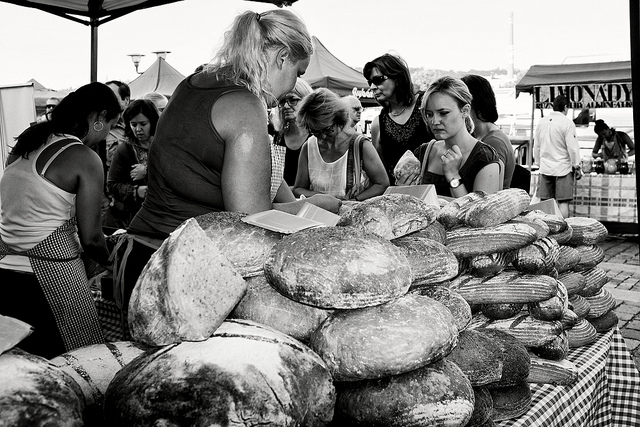It is a sad series of facts that out of the nine billion people on this planet, one billion are undernourished, one in seven is hungry and more than two billion are overweight.
The global food system seems to be engineered to create a world of increasing hunger and obesity, while climate change with its severe storms, floods and droughts has kicked this into overdrive.
Thus we currently see things like wheat harvest reduced, stunted or completely lost due to the drought in Western Canada, which will spike the future price of the grain.
But there are also policies that destroy crops on purpose.
For example, the Brazilian public was sold on biofuels—an agro-industry intended to wean them off oil, whereby crops are grown not to be eaten but set on fire!
Other practices which not only lead to global inequity, but are also unsustainable, are the corn and sugar grown in the Global South to be processed into ethanol for the gas tanks of rich consumers. These crops take more energy to produce than they generate. Meanwhile the land diverted to produce ethanol fuel drives up the price of cereal.
The Western diet is another huge factor, for it demands meat. As anyone who has ever read Diet for a Small Planet knows, it takes a great deal of grain to feed cattle for the slaughter, grain which could feed many more people than the meat does. Thus the demand for meat is a driver of global inequity and food insecurity. And it is even questionable whether a diet which includes meat is healthy.
For example, per capita meat consumption in India was much less than in the USA until 1992. Indians were predominantly vegetarian or ate only a token amount of meat. Then the Indian government admitted soft drink manufacturers and food multinationals into its previously protected economy. Within a decade India became home to the world’s largest number of diabetics.
But it is possible to overcome both global and local food insecurity.
Organic farming, eating local and seasonal food and a more just global economy are sustainable solutions to world hunger.
Industrial agriculture relies on a great deal of water, fossil fuels and predictable weather—all of which are becoming in short supply. Agro-ecological techniques are more robust in the face of climate change and are higher in yields. In fact the route to eradicating world hunger is also the way to prevent global epidemics of diabetes and heart disease, while addressing environmental and social ills.
And the good news is that there are many worldwide grassroots movements organizing for change.
This change involves eating and growing food that is environmentally sustainable and socially just. For example, here in Halifax, Nova Scotia there are several positive projects that reduce food insecurity.
Firstly, there are currently 12 farmers markets where healthy, locally grown food can be purchased.
As a community we have realized that when citizens know how food is grown there is greater food security. As such there are now 41 community gardens, 42 school gardens, 6 community greenhouses, and 3 urban farms in Halifax—all with food science education classes available.
Still, because nearly 20% of households in Halifax are unable to afford healthy food (households with incomes less than $20,000, and thus not likely to meet recommended daily intakes of fruits and vegetables), there has been a sharp increase in the use of food banks in Nova Scotia[1]. This brings up questions about the adequacy of income assistance and of the minimum wage. But even some food banks are beginning to grow their own food as well!
Indeed, a sustainable food system is reliant on producing food locally.
Rather than food travelling an average of 4,000 km before arriving in Halifax, the city is now contemplating investing in local farms and food production.
Finally, the most sustainable food source for infants in all communities is breastfeeding. In Halifax more than 50 stores and offices have agreed to create a positive environment for breastfeeding, which is natural and good for the environment because there is no waste produced by infant formula packaging.
Organic farming is on the rise, as is buying local and eating local and seasonal food.
If this wisdom spreads throughout the world, a more just global economy with sustainable solutions to hunger is a real possibility.
[1] In Nova Scotia many farmers and fishers have trouble making a living, given the cost of equipment and fuel. The average age of farmers and fishers is rising and, as they retire, they are not being replaced.
Source: Stuffed and Starved, by Raj Patel
Relephant:
Is the Local Food Movement Really Sustainable?
Author: Linda Lewis
Editor: Khara-Jade Warren
Image: Petr Dosek/ Flickr


 Share on bsky
Share on bsky





Read 4 comments and reply